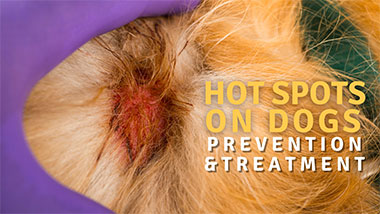Everything About Ear Mites in Dogs

If you want to know everything about ear mites in dogs, you must read this article to the end.
What is an ear mite?
The scientific name for ear mites is Otodectes cynotis. This little creature can only survive on the host and easily transfer from one host to another.
Ear mites prefer to live in the ear canal and feed on the oils and wax from the dog’s ear. It is difficult to find ear mites on the surfaces of the skin of dogs. They do not bite the skin, but their presence causes itching and excessive scratching results in serious problems.
Signs and symptoms of ear mite in dogs
- Ear itching and scratching
- Skin lesions around the ears
- Head shaking
- Reddish-brown or dark, crumbly discharge from the affected ear
- Hair loss around the ear due to scratching or excessive grooming
- Blood blisters on dog ear due to rupture of blood vessel
Diagnosis
Treatment or meds for ear mites in dogs
Meds for ear mites in dogs are simply not enough; you also have to eliminate mites from your dog’s surroundings. You should clean the carpet or dog bed thoroughly so that your dog cannot get these mites again.Most medications for ear mites generally kill adult mites, but their eggs are not affected. Therefore, the treatment may take a few weeks for getting rid of ear mites in dogs.
Ear mites in dogs natural treatment
Olive oil is a gentler option for cleaning dogs’ ears, as recommended by Dr. Steve Marsden and Dr. Susan Wynne in the Manual of Natural Veterinary Medicine. You can remove debris and mites with olive oil every 3 days for 2 weeks.Garlic oil and mullein oil also have strong anti-parasitic effects, so these oils can also be used. Green tea is not only used to remove debris from the dog’s ear but is also an effective antiseptic to prevent future infections.
Prevention of ear mites in dogs
First of all, you should regularly check your dog’s ear for mites, and cleaning the ear should be included in the grooming session. When you go for a walk with your dog, try to limit contact with other dogs. Clean the dog’s living area as much as possible.
Ear mites in dogs are a common problem, but the good news is that they can be easily treated. You should regularly check your dog for ear mites for early diagnosis and treatment.
Hot Spots on Dogs and Proven Treatment
If you think your dog seems irritated and has been itching a lot lately, it may have hot spots. You might not know anything about hot spots on dogs, but don’t worry because we have listed everything here.
What exactly are Hot Spots?
Hot spots are areas with red, inflamed sores on your dog, often accompanied by oozing and itching. Medically speaking, they are known as moist dermatitis. They can appear anywhere on your dogs, such as legs, feet, and hips.
Why do Dogs get Hot Spots?
You need to examine your dog closely to know what has caused this skin condition. Hot spots are often hidden in fur, and you don’t know your dog has them until they become smelly. There are a lot of different reasons why do dogs get hot spots, but the main ones include:
- Insect bites
- Excess of moisture
- Fleas and parasites
- Allergies from certain foods
- Excessive licking
Signs of Hot Spots on Dogs and Do Hot Spots Hurt Dogs?
The answer to that is, yes, they do, which is why it is best to know all the signs to rule out the problem at its beginning. The common indications are:
- Redness in different areas
- Hair loss in dogs
- White spots on dogs’ paws
- Sores with pus
- Itchy spots
How to Treat Hot Spots on Dogs?
1. Locate the infected areas: The first step to solving any problem is to identify the problem, which in this case, is locating the areas with hot spots—the common areas where hot spots on dogs are their hips, feet, and legs. So, you can start from there, if your dog is furry.
2. Trim the hair surrounding hot spots: The idea of trimming the hair seems scary for your dog, but it has to be done. Carefully cut the extra hair or fur that may be hiding the hot spots underneath. This job requires more than one person, as the dogs become scared and run away.
3. Cleaning the infected areas: For this step, you might need professional guidance. It is best to use a product or substance for cleaning that has been approved by a vet. It is advisable to keep a pain reliever for dogs at home for severe cases.
4. Apply medicine: Once you have trimmed and cleaned the areas surrounding hot spots, it is time for the prescribed medicines. Use a hydrocortisone ointment on the spots to speed up the healing process and to reduce itching. If your dog is not healed in two days, it is best to pay a visit to the vet.
How to Prevent Hot Spots on Dogs?
When you have a dog at home, treating hot spots is not enough; you need to know the root cause to be prevented.
- Know the reason behind the appearance of hot spots on your dog. For instance, if your dog is allergic to parasites, you can prevent them by not taking your dog to places where there are fleas.
- Proper grooming plays an important role in the better health of your dog. Good hygiene ensures that your dog is free from infection.
- Boredom is one of the causes of hot spots on dogs. Keep your dog engaged in daily exercise and playtime. Playing with your dog keeps them busy and lively.
- Dogs get hot spots from excessive licking too. It can be prevented if you keep your dog engaged through puzzle games, ball games, and toys.
- Essential nutrients and supplements like fatty acids reduce the chances of hot spots on dogs. They provide a strong immune system and better skin to your dog.





